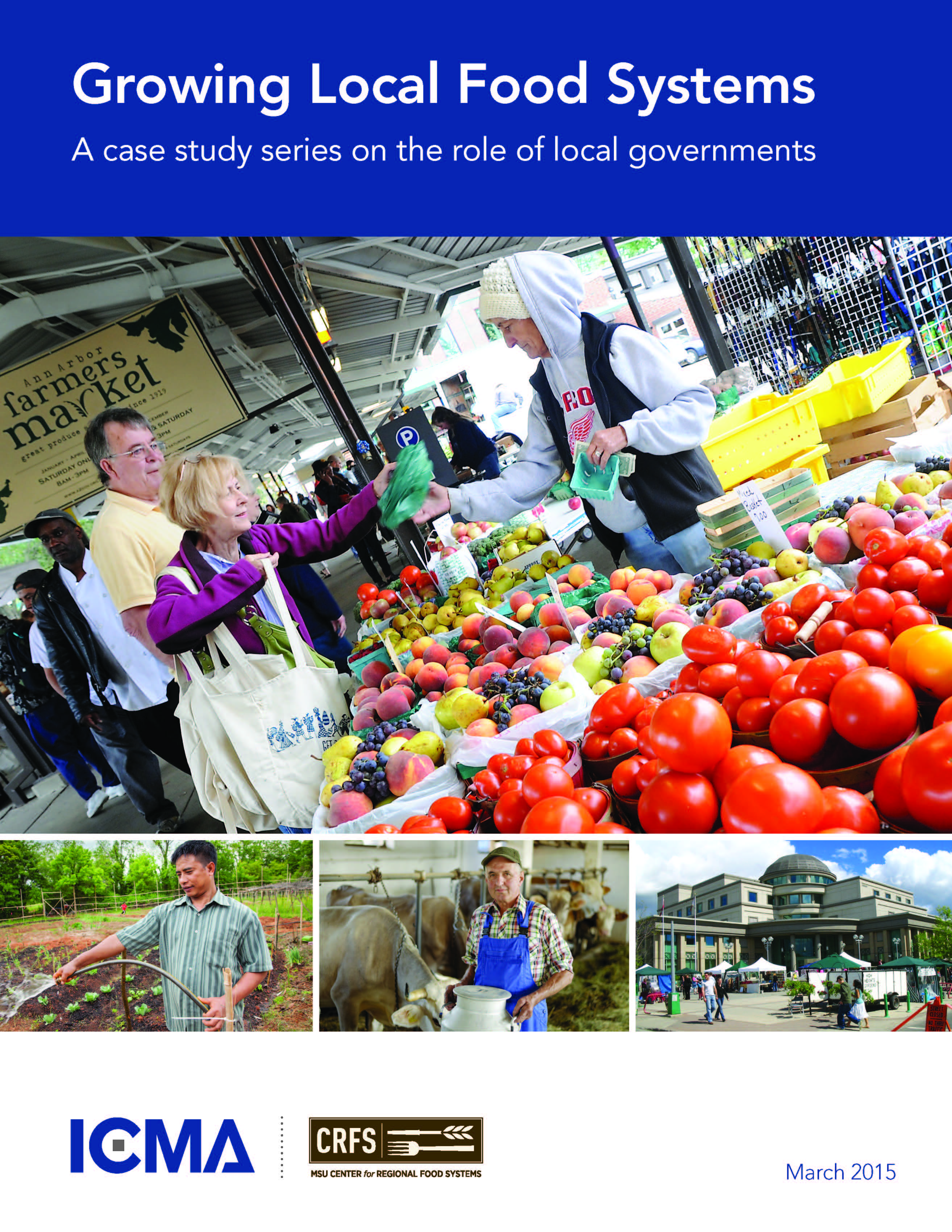
Local food systems align consumer demand with locally produced and distributed food. They also increase economic resiliency through expanded employment and market opportunities; promote public health through improved access to healthy food; account for environmental considerations in land use planning and policy; and address social equity by tailoring initiatives to disadvantaged populations.
In 2012, Michigan State University’s Center for Regional Food Systems and ICMA's Center for Sustainable Communities collaborated on a national survey to understand more about the ways that local governments are supporting local food systems. A wide range of strategies were reported in the nearly 2,000 responses, with permitting of farmers’ markets (59%), permitting the sale of produce from local gardens or farm stands (51%), and providing land access for community gardens (34%) among the most common. In order to further explore how and why local governments engage in local food systems development, Michigan State University and ICMA identified the following four leading practice communities to profile in a case study series:
- Ann Arbor-Washtenaw County, Michigan (city population 117,025; county population 354,240)
- Catawba County, North Carolina (population 154,810)
- Decatur, Georgia (population 20,086)
- Topsham, Maine (population 8,750).
These communities all demonstrate a commitment to local food systems and have been successful in leading their growth. Although motivations, approaches, and allocated resources varied across these communities, common themes emerged as leading practices for local leaders, including:
- Convene and build partnerships that leverage resources and expertise found throughout the community. Local government staff members don’t have to become experts in irrigation systems, food marketing, or farmers market management; instead, they should identify their strengths and those of others and build teams that advance the collective goals.
- Leverage your position to raise awareness of local food systems through campaigns, community events, and other outreach strategies. In order to achieve buy-in and maintain support for local food systems activities from a broader range of stakeholders, efforts should be communicated and framed as aligning with as many community goals as possible for economic development, public health, environmental sustainability, and social equity.
- Consider how local food systems can address equity issues. Food is a basic human need, and local food systems have a unique capacity to protect and support vulnerable and low-income residents. Farmer’s markets have increasingly catered to these populations by locating in low-access areas—so-called “food deserts”— and by expanding accessibility and purchasing power for those using such government-sponsored food assistance.
- Integrate food systems activities into local government plans and strategies. The processes through which these are developed provide opportunities to learn about and balance interests across different internal departments and community stakeholders. The resulting directives can help to link disparate activities through a common language or agenda and to set reasonable expectations for roles and anticipated outcomes.
- Be inclusive and look beyond jurisdictional or geographic boundaries to define community more broadly when thinking about available resources and potential benefit. Consider opportunities to preserve land or support the distribution infrastructure that will enhance food systems at the regional, not just local scale.
To read more about out how the four leading practice communities used these strategies to promote local food systems, download the full case study series here.
New, Reduced Membership Dues
A new, reduced dues rate is available for CAOs/ACAOs, along with additional discounts for those in smaller communities, has been implemented. Learn more and be sure to join or renew today!
